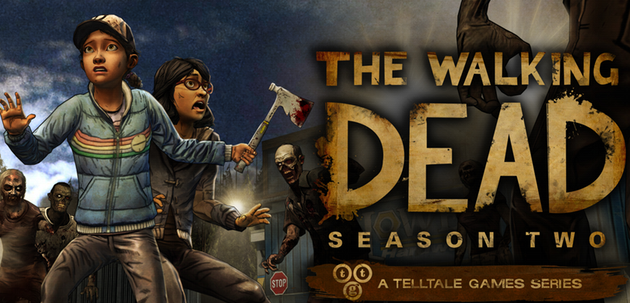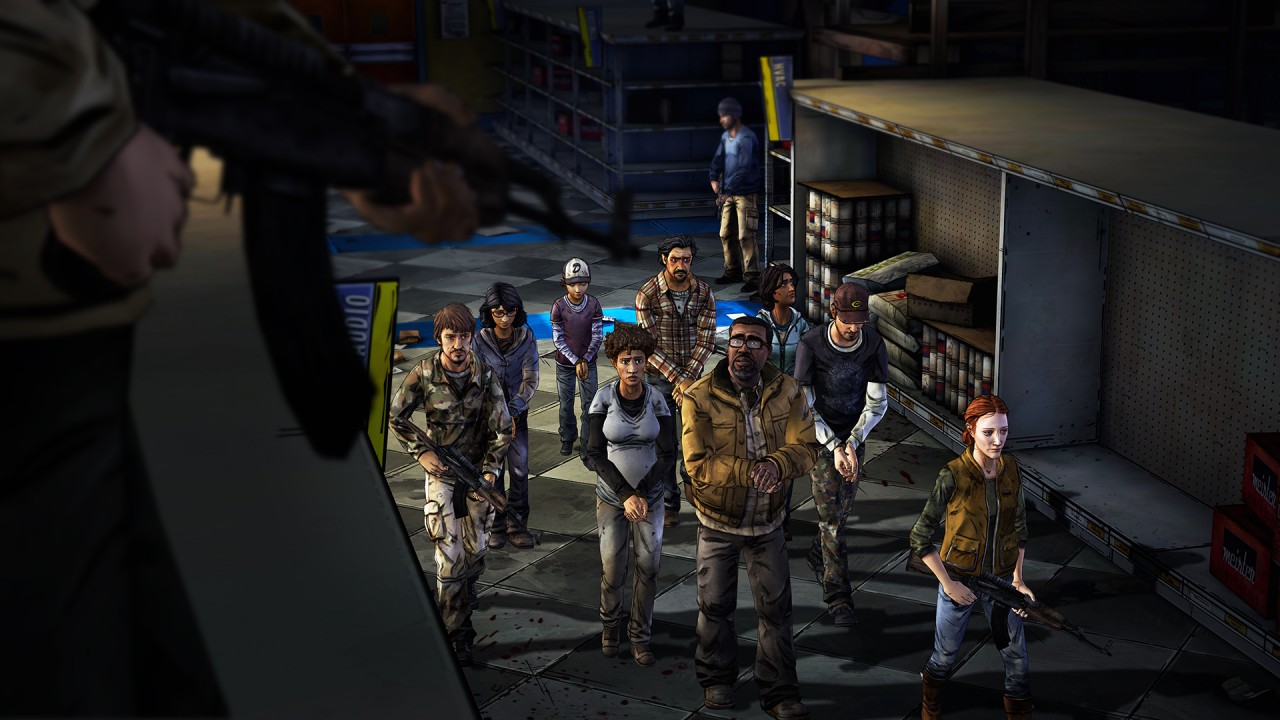I was incredibly worried about this episode. Anyone who read my review of Episode One will know that. I wasn’t exactly lenient during my stay on the IP spoiler casts either. I curdled at the thought of sitting through another shitty three hour point and click marathon. I had to prepare.
I fixed a drink – a Corpse Reviver for irony – and sat down to dive into the next chapter of what has been quite the lifeless video gaming experience for me. Before I finished my cocktail, I was convinced that maybe, just maybe, it could all turn around. Episode Three might not have lived up to the extremely lofty praise the general consensus has given the series thus far, but the difference in the quality of choices to make, characters to interact with, and drama to partake in are like night and day, compared to the earlier episodes.
One of my biggest gripes with this award winning series’ second season thus far was how incredibly trite it all was. People who looked like what TV and movies told me a group of zombie apocalypse survivors looked like, were saying and doing all the cliché things that TV and movies told me they would do. Coming from a license that reinvigorated the subgenre, it was incredibly disappointing to see it sink so low.
In Harm’s Way derives its drama and tension, maybe not from completely original means, but in genuine and meaningful ways. The applied focus away from raucous action may have been part of this revolution. There are very few action sequences, which is great, because they’re historically (and presently) terrible. With the exception of the very end scene, which was surprisingly spectacular. There is no great way, I’m learning, to introduce zombies into the situation suddenly. It always seems contrived and heavy handed; why is there suddenly seven slow-witted undead in this room and not one of these overly paranoid party members knew about it? Omitting the overly inconceivable scenarios that would spring these attacks really only helps the player focus on the really compelling concepts of The Walking Dead: how big an asshole everyone is.
Knowing that, when the chips are down everyone is kind of a dick, is exactly the sort of narrative that Telltale is known for capitalizing on in the first season of this series, and it’s back in form finally in this episode. No one is completely static in behavior and motivations, which makes knowing who to trust that much more difficult for the young Clementine. Being thrust into the belly of this previously alluded to falling out that Carver and Luke’s group had without a clear picture of how and why is a great underlying current theme to make all of your choices that much more difficult. Bonnie is just doing as she’s told, but is that excuse enough? Troy is a big bully, but is it because it’s easier than getting on Carver’s well-pronounced bad side? These are the subtle human conflicts that the first two episodes were exasperatedly devoid of.
As a whole, this episode always felt like it was going somewhere. As soon as you’re given room to explore, your working towards a goal: getting out. Even before you can confirm that this place is a horrible den of fascist malevolence, you know that staying is a mistake. Maybe this focus is what was missing the entire time. They finally all have a goal, and have to achieve it despite some real oppression. In turn, it shows us the real sides of our party members, and allows me to really empathize with them, for the first time.
In reality, though, the episode’s plot really is rather predictable. If you’ve seen an horror or action flick in the last decade, you can see some of the twists coming. But sometimes, that’s okay. Mike Madsen doing his signature gravelly-voiced bad guy is novel, and at once is both sort of silly, and familiar enough to really get a handle on who Carver is trying to be. We’ve all seen the zealot society leader trying to create order by domination (hell, they call him the Governor in the actual books), but it doesn’t change the fact that this sort of character is a compelling and dangerous foe, even if I do recognize 80% of what’s coming from his mouth.
The new characters are introduced and developed rapidly, as well. One woman, of whom’s name you have yet to learn by the credits scene, seems more complex than many of the characters that have come and gone throughout the season so far. Maybe it’s the specific tension of this very unique set of circumstances that would make any person interesting, or maybe the studio has finally gotten its narrative groove back. In either case, Carver and his merry band of crazies pushes the group into a final sequence that really sets this episode apart from many of Telltale’s other works. The last ten minutes are not to be missed.
The game also runs decidedly better than it did in the previous episodes. Very little slowdown and frame skipping to be had in both moments of less raucous investigation and moments of zombie wreaking action. There are still very brand specific glitches every now and again, like mouths not moving when speaking, or animations being a second behind. None of them were particularly game breaking, though.
So now I am left at a crossroads. I was ready to give up on this series after the first two lackluster episodes. In Harm’s Way has definitely got me interested to see whats next, at least. It doesn’t completely overcome some of the previous chapters’ weaknesses, but it has at least proven that there is still some genuine drama and intrigue left to be had in this series. I fear for the next couple chapters, in hopes that this wasn’t just an example of the stars aligning, but at the very least, I’m willing to trust the title with my time again.







